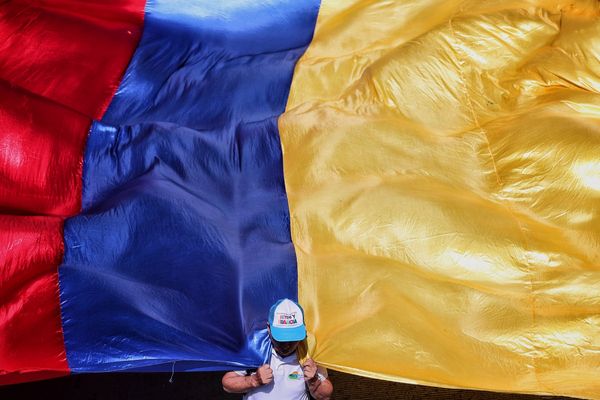
When Kendra Womack uploaded a short video of her aunt’s Labrador retriever to TikTok last year, she didn’t expect what happened next.
The social-media app’s algorithm picked up the clip of the 26-year-old student and part-time barista tossing a yellow squeeze toy to Daisy, who appeared to devour it in a single gulp, and promoted it to users around the world. Overnight, the 12-second clip went viral, getting hundreds of thousands of views. It has since been seen by more than 1.4 million people.
“I was in shock and disbelief," Ms. Womack said. “I couldn’t believe how easy it was."
Ms. Womack and other enterprising smartphone users around the world have turned to TikTok as the go-to platform for delivering an instant shot at internet fame. At a time when a growing number of social-media platforms are basing their business models on celebrity creators and other popular influencers, TikTok is emphasizing the idea of turning nobodies into viral sensations as it tries to regain momentum following a turbulent 2020.
Some TikTok users, though, get frustrated when the viral fame of one video is hard to replicate with subsequent clips. And TikTok’s short-form video format, which was novel when it was launched less than five years ago, now faces competition from a host of rivals.
For more than a decade, social media was dominated by a handful of platforms—primarily Facebook, its photo-sharing app Instagram, YouTube and Twitter—driven by algorithms that served content to users based on their connections to friends and what people searched for. This made it hard for newcomers to attract attention without first building up sizable followings.
TikTok, which is owned by Beijing-based ByteDance Ltd., was different. TikTok’s secretive algorithm appears to prize engagement, according to social-media analysts and consultants. When a user opens TikTok, the app serves videos that it determines the user is likely to watch for longer, with little consideration for who created them or their follower counts. The strategy has differentiated TikTok at a time when people have more places than ever to direct their attention.
The service promotes specific pieces of content, rather than focusing on individual creators and their channels, the way YouTube does. That makes it easier for personalities to break out on TikTok, but leaves them wondering how to sustain their momentum.
“On TikTok, everyone feels like they can be seen," said Sarah Peretz, a social-media consultant who helps brands and musicians with marketing. “Everyone feels like they can be discovered."
A spokeswoman for TikTok declined to specify how the app selects videos to show its users, but described the virality that regular people achieve as a meritocratic system that gives the app authenticity.
TikTok grew rapidly through 2018 and 2019, but that growth hit a speed bump last year.
Former President Donald Trump said in August that he planned to ban TikTok if it didn’t find an American buyer for its U.S. operations, citing concerns that user data could be shared with the Chinese government. TikTok has said that would never be allowed, but the U.S. government’s demands kicked off months of legal wrangling and deal talks.
Those efforts stalled when Mr. Trump lost re-election, and the U.S. plan to force TikTok’s sale has been shelved indefinitely.
The controversy and the risk of the app being banned took a toll with monthly downloads in the U.S. dropping to 4.3 million in November, from 10.5 million in March of 2020, according to research firm Sensor Tower. TikTok has said it has about 100 million users in the U.S.
Competitors also seized the moment. Snapchat and Facebook both attempted to replicate the success of TikTok’s recommendation algorithm, and in August, Facebook announced its own TikTok-like video feed, called Reels. In November Snapchat launched its own version, called Spotlight. Snapchat has said 100 million people use its Spotlight feature monthly. Facebook hasn’t shared data on how much people are using Reels.
Despite the decline in downloads, TikTok was the most-downloaded app in 2020, both in the U.S. and world-wide, according to App Annie. This spring, TikTok’s downloads have rebounded, as the controversy receded and users flocked to the app while the pandemic continued to keep them inside. TikTok remained the top downloaded app in the U.S. in the first quarter, according to App Annie.
Though TikTok’s future in the U.S. appears safe, at least for the moment, a new crop of buzzy upstarts is focused on helping established creators make money, rather than get discovered.
Substack serves writers; Patreon focuses on artists and musicians; OnlyFans specializes in amateur porn stars.
TikTok is now stepping up efforts to build its own creator base. In Los Angeles, the company has a team that functions like artist-relations executives in the music industry: meeting with creators, helping them figure out new tools and strategizing about how to attract followers. TikTok doesn’t share ad revenue with creators the way YouTube does, but it has started to pay them through a fund if they have logged at least 100,000 video views in 30 days. TikTok doesn’t say how much that experimental program pays.
But some regular users feel it has become harder to catch the attention of the app’s all-powerful algorithm. The spokeswoman for TikTok disputed this notion—she said as more people join TikTok, the additional eyeballs create an even greater opportunity for people to make it big.
Nathan Apodaca was one of those who became a TikTok supernova. When his pickup truck wouldn’t start on his way to a job packing potatoes at a warehouse in Idaho Falls last fall, he filmed himself instead commuting on his skateboard, drinking from a large bottle of juice and lip-syncing to Fleetwood Mac’s “Dreams." The internet loved him. By the end of the year his video had logged more than 72 million views.
Now the 38-year-old is filming promotional videos for independent artists, taco trucks and fast-food restaurants. He said he’s trying to break into acting, and has traveled a handful of times to L.A. for auditions, riding on an airplane for the first time. “I did not know we could fly over clouds," he said. “It was mind boggling."
Mr. Apodaca said his promo deals and donations from fans earned him enough to move out of his RV and into a home he bought for about $320,000.
But how to replicate his initial success on TikTok is still a mystery, he said. That has been Ms. Womack’s experience as well.
She’s posted about 50 videos since her viral video of Daisy, and none has received more than 1,700 views. She tried making videos about trending challenges, such as costume changes and funny bits of dialogue, but none clicked.
She said she loves TikTok, but posts there less often.
Thinking back on her success with Daisy, she shrugs. “To me, it was just a fluke," she says.
Every time she watches the video it makes her laugh.
This story has been published from a wire agency feed without modifications to the text.







